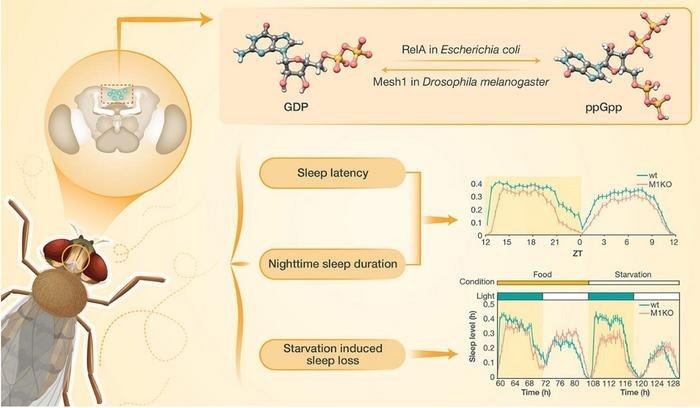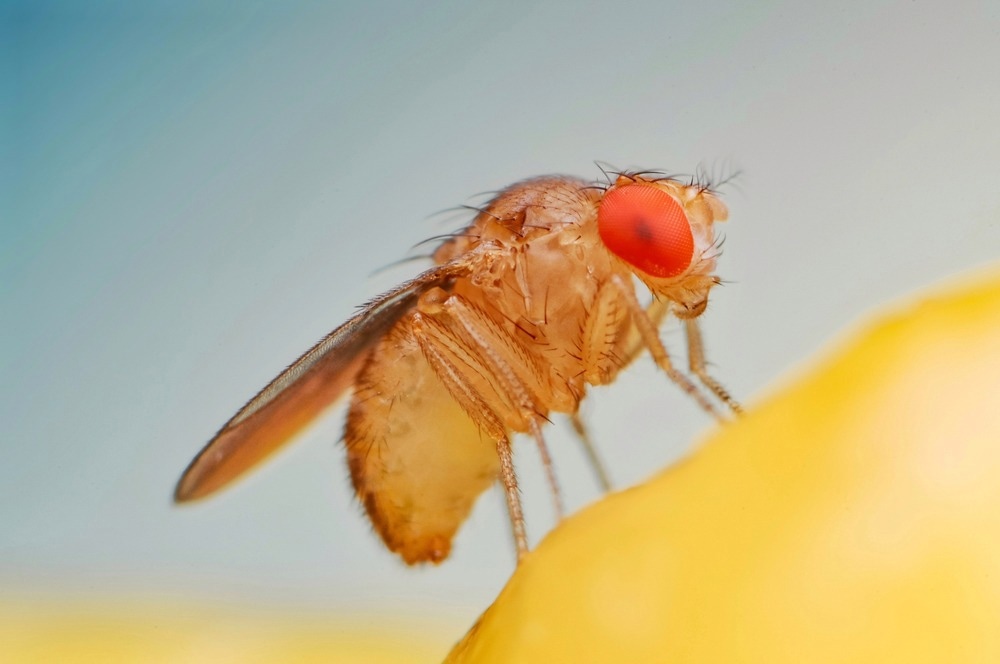Reviewed by Danielle Ellis, B.Sc.Dec 12 2023
Sleep, a fundamental behavior observed across various organisms, ranging from worms to humans, is influenced by both internal sleep drive and external environmental factors.

Image Credit: Beijing Zhongke Journal Publishing Co. Ltd.
Despite its ubiquity, the mechanisms governing sleep remain elusive. Researchers from Peking University, China, led by Dr Yi Rao, Dr Xihuimin Dai, and Dr Wei Yang, have unraveled a previously unnoticed contributor to fruit fly sleep—the molecule ppGpp, recognized for its role in bacterial responses to amino acid scarcity.
Conducting a forward genetic screen involving approximately 2000 mutant flies, the team identified a strain displaying atypical sleep patterns characterized by reduced nighttime sleep and an extended time to fall asleep. This behavior stemmed from mutations in a gene named Mesh1, which was found to be associated with ppGpp degradation in fruit flies.
While ppGpp was originally linked to bacterial functions, this study unveiled its presence in fruit flies and its involvement in regulating their sleep patterns. Notably, ppGpp also played a role in Sleep Induced Sleep Loss (SISL) in flies. Mutations in Mesh1 exacerbated sleep loss during starvation, while an increase in Mesh1 levels helped mitigate it.

Image Credit: Arif_Vector/Shutterstock.com
The researchers further localized the specific brain region in fruit flies where ppGpp operates to regulate sleep and SISL—identified as the pars intercerebralis (PI), particularly in Dilp2 (Drosophila insulin-like peptide 2)-expressing neurons. Intriguingly, prior studies had indicated the significance of Dilp2-expressing neurons in SISL regulation.
In summary, this investigation underscores the unexpected involvement of ppGpp, a molecule in bacterial stringent responses, in shaping the sleep patterns of fruit flies, particularly during periods of hunger.
Unraveling this connection holds the potential to provide insights into how external factors influence sleep, paving the way for new revelations about the interplay between sleep and hunger, not only in animals but potentially in humans as well.
Source:
Journal reference:
Dai, X., et al. (2023) ppGpp is present in, and functions to regulate sleep of, Drosophila. hLife. doi.org/10.1016/j.hlife.2023.10.004.